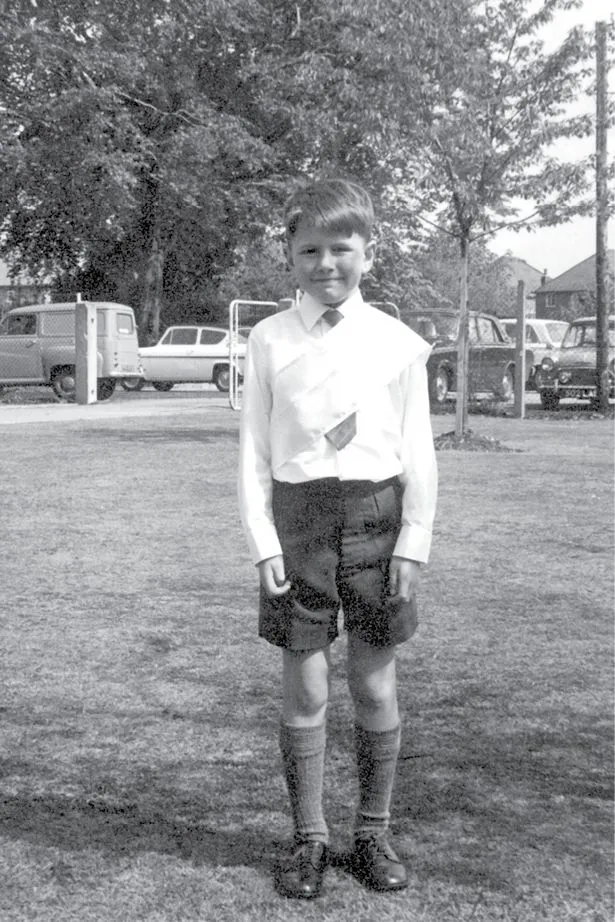In the 1960s, Dad loved his work and loved his life. He was living the dream.
For Mom, who didn’t drive, Hollywood was isolating. She was stuck out there in the suburbs, away from her family and friends, and had stopped working the day she found out she was pregnant. Alone with me, the only child.
There were few local shops, and she made friends slowly. But Mom was a churchgoer, had been all her life, and that became her social life, which is why the daily journey to St. Jude’s had to be made, regardless of distance or weather.
Of course, I went along with her to church too.
I still remember the music. St. Jude’s was where I would get a handle on the Catholic songbook; “All Things Bright and Beautiful,” “The Lord Is My Shepherd,” “Faith of Our Fathers” formed the daily fare. But they saved the real megahits for Christmas: “We Three Kings,” for example—not even I could resist singing along with that one; it was a real “manthem,” a manly anthem, proud and forceful—or “O Come, All Ye Faithful,” which could be sung in Latin as “Adeste Fideles” if the priest was feeling confident.
Some of those hymns, like “Away in a Manger,” they have to be amazing. They’ve been written to grab the imagination of people aged from five to ninety-five. Some of the arrangements had been appropriated from titans like J. S. Bach, so without even knowing it, I was being exposed to some of the greatest music ever written. The organ would be cruising those major-to-minor moves, and the hairs would be standing up on the back of my neck.
Most European pop music is based on Christian church music, in the same way that so much American pop is based on gospel church music, which is more call-and-response. Le Bon turned me on to that idea. The experience of church music in my childhood has never gone away and continues to be a deep influence on any songwriting I am involved in.
Mom’s other savior from her suburban exile came by way of technology and her transistor radio, which was always on, tuned to the BBC Light Programme. My waking memory of any new day was the sound of that radio. I would hear the radio before I saw or heard any parent.
Mom adored popular music. She had been a fan as a teenager, a stage-door Jeannie, idolizing the bandleaders of her day: Harry James, Artie Shaw. I found a little black book of hers recently in which she had transcribed, in her always elegant handwriting, about sixty hit songs of the day, with titles like “My Foolish Heart,” “Come with Me My Honey” and “Boy in My Dream.”
All of this passion built to a crescendo for her—and almost everyone else in the country—when the Beatles came along in 1962, when I was two. They were, in equal measure, romantic, cheeky and adventurous. And they were from Liverpool.
All those new mothers in love with the mop-tops—while we were learning to walk, some of us still in our cots—would be singing to us, “Love, love me do,” “All my loving,” or “She loves you, yeah, yeah, yeah . . .”
Oedipus, kick up your heels.

4 The Catholic Caveat
When I reached the age of four, church was replaced by school. I was happy to go. If I had known what was in store for me, they would have had to drag me there.
I now look back, somewhat wryly, on those preschool years as idyllic. It was my first experience of being at the exclusive center of a woman’s attention.
Mom and Dad had signed me up for a Catholic primary school, Our Lady of the Wayside. Despite Dad’s agnosticism, he was all for it. The theory was there was a better quality of education to be had there than at the local school.
The first morning, Mom dressed me in my new school uniform—yellow-and-gray tie, gray flannel shorts and a tiny blazer—fed me, and walked me up the hill to join the other half-dozen victims waiting for the bus.
I was perfectly relaxed about all of this. Confident, excited, keen. Mom and Dad had done a good job of preparing me for this day. I must have exuded a certain calmness, as the boy who was causing the most trouble in the classroom, screaming and shouting, was sat next to me.
The best aspects of the primary school classroom were the sandbox and the “tuck trolley” that delivered the jam-filled cookies we called Jammie Dodgers at eleven o’clock sharp.
1 comment